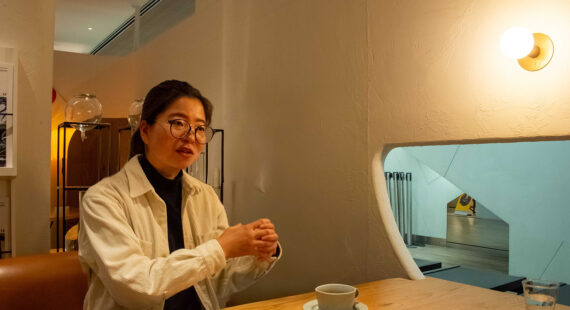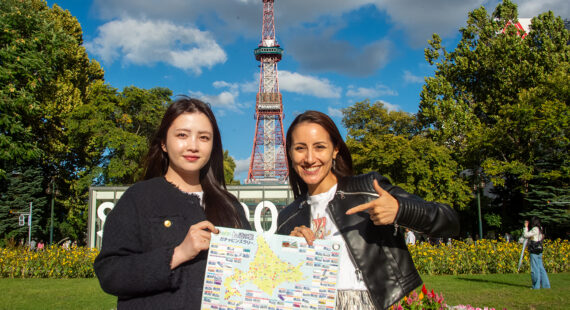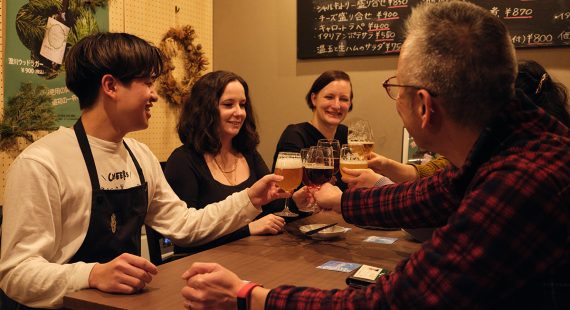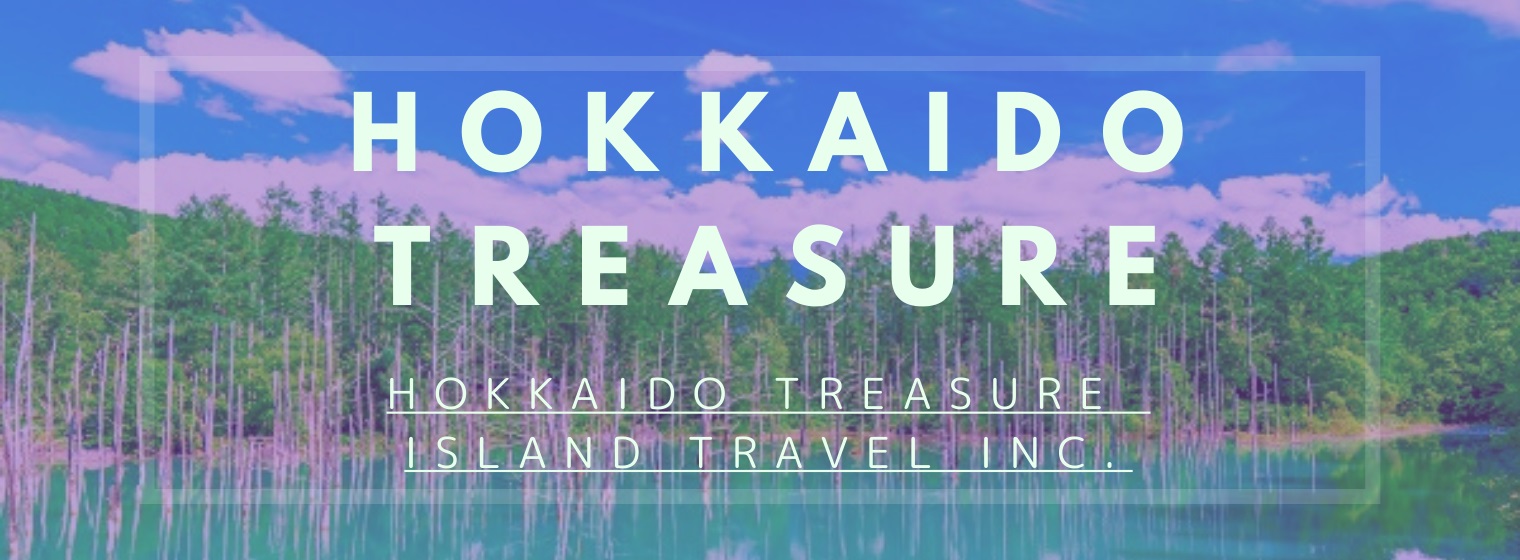Hakodate city located at the tip of the Oshima Peninsula in Hokkaido—the northernmost island of Japan—is the largest and the most important city in southern Hokkaido. The city is shaped like a fan unfolding from the foot of Mount Hakodate, which stands on a cape stretching into the Hakodate bay. The night view from Mount Hakodate over the city and the bay around it is known worldwide and is titled one of the great night views of the world, Japan, and Hokkaido. However, there is more than just one amazing night view in Hakodate, and actually one of the best ways to get to know Hakodate is indeed through its several night views.
In this blog column, you can read about different ways to enjoy the stunning night views of Hakodate—both the world-famous night view from Mount Hakodate and many other well-kept-secret places—during your Hakodate trip. In addition, we also introduce other ways to enjoy Hakodate, such as shopping, eating, having fun, and learning.
Also check out our earlier blog columns about Hakodate: History of Hokkaido: The War of the Last Samurai in Hakodate and Hakodate: The Southern Capital of Hokkaido.
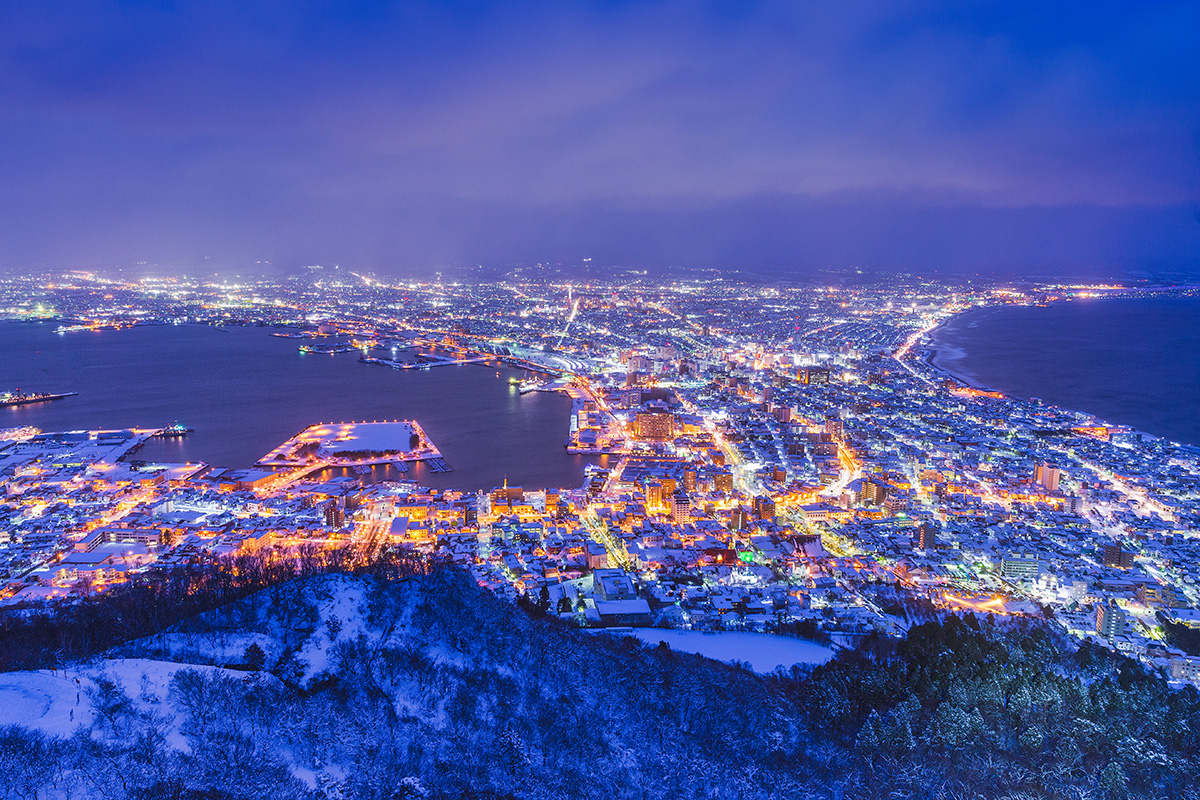
Hakodate city and Mount Hakodate
Hakodate (函館) city is located in Oshima subprefecture, Hokkaido, Japan, and it’s the capital of the said subprefecture. The city is the third biggest in Japan with a total area of 677.77 square kilometers (261.69 square miles) and about 246,000 inhabitants. The city is built on the southern tip of the Oshima Peninsula, or more precisely, in Kameda Peninsula (the southeast pointing forked end of the Oshima Peninsula). Mount Hakodate (函館山/Hakodateyama in Japanese)—sometimes also called Mount Gagyuu (臥牛山/Gagyuuzan in Japanese)—stands on a small peninsula in front of the city but actually the mountain used to be an island. As time went by, a sandbar was formed between the island and Kameda Peninsula and the small island was connected to the island of Hokkaido. Hakodate downtown is built on the sandbar and the city spreads like a fan from the sandbar to the surrounding plain.
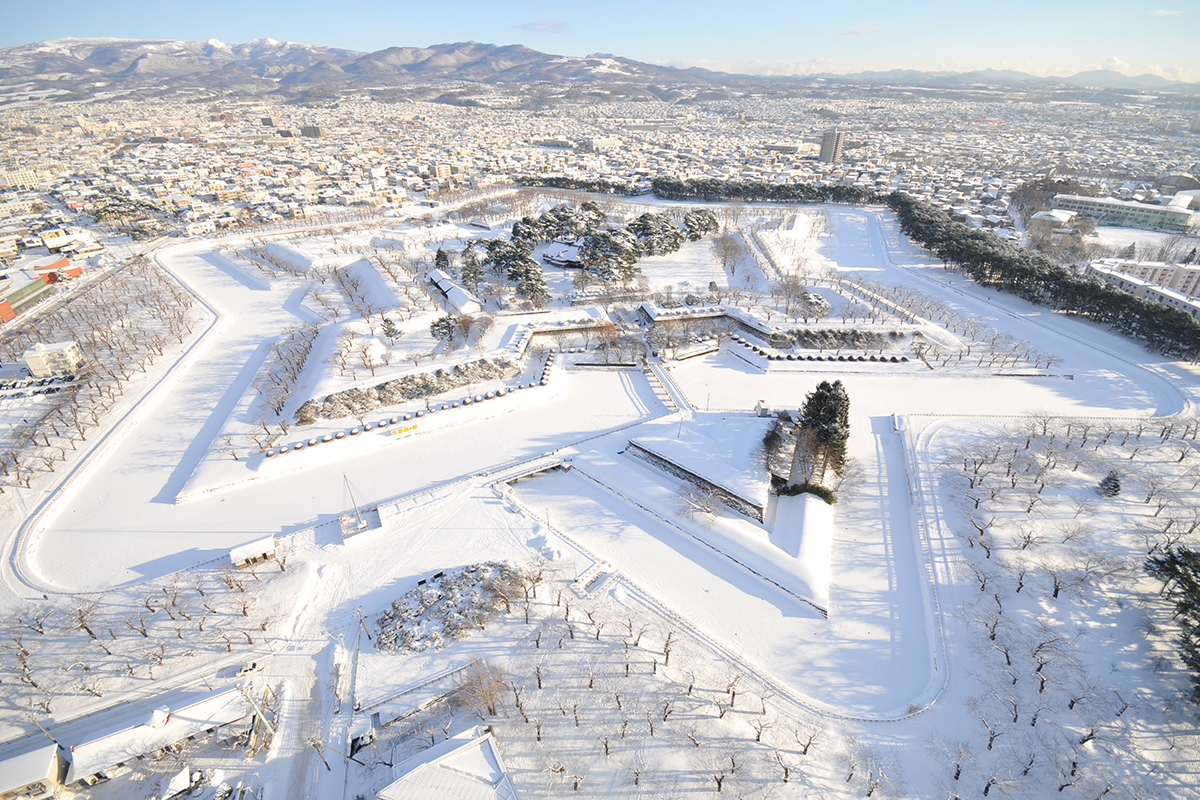
The Kameda peninsula and Hakodate city are separated from Honshu, the main island of Japan, by the narrow Tsugaru strait, which offers access from Hakodate to both the Sea of Japan and the Pacific Ocean. The strait has been a historically crucial passway both in the point of view of trade and military defense. Mount Hakodate is an excellent lookout to spy for approaching enemy ships and it was used as a fortress and an observation post until 1946. Now the mountain can be used to spy for the beautiful views over the Hakodate city and Tsugaru strait instead. You can read about the history of Hakodate in detail in our earlier blog column History of Hokkaido: The War of the Last Samurai in Hakodate.
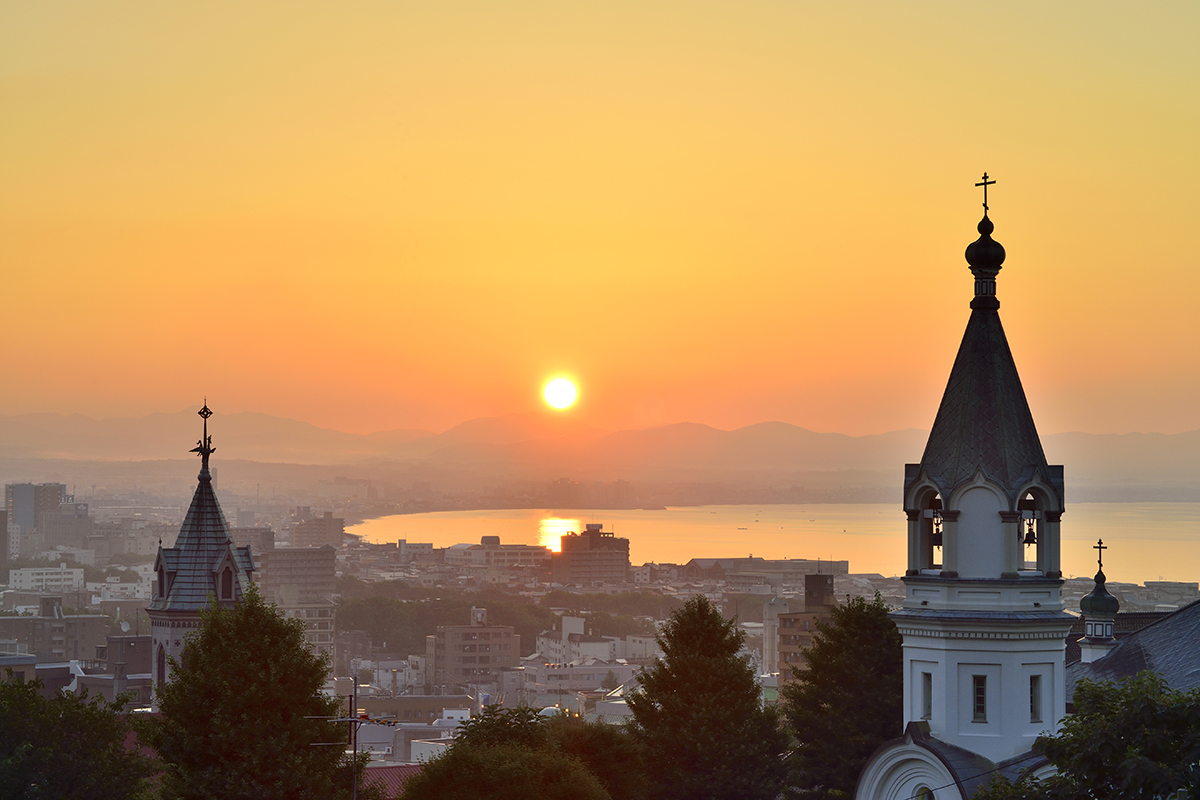
Since Hakodate is located in the southern part of Hokkaido, the winters in Hakodate are not as harsh and cold compared for example to Sapporo or Asahikawa up in the north. However, it does get cold in Hakodate, too, during the winter and there is also a lot of snow. For example, the average high temperature in Hakodate in January is 1°C (about 34°F) and the average low is -6°C (21°F). The yearly snowfall in Hakodate is about 3 meters (9.8 feet). Summers, on the other hand, are relatively cool with an average high temperature of 24°C (75°F) in July and 26°C (79°F) in August.
The famed night views of Hakodate
The famous Hakodate night views can be enjoyed during any season and as certain seasons tend to be foggier or cloudier, the characteristics of the views change, too. So, if you have seen the Hakodate night view during the summer, it’s worth seeing it again for example during the winter, because the scenery is completely different. And what a view it is! The Hakodate night view is world-famous. The Michelin Green Guide Japan gave the view three stars (which means “highly recommended” and is the best recommendation an attraction can get) in its review. The Hakodate night view is also dubbed as one of the three great night views of the world besides Naples and Hong Kong, one of the three great night views of Japan (the two other’s being the view from Mayasan over Kobe and the view from Inasayama over Nagasaki) as well as one of the three great night views of Hokkaido (the two others are the view from Moiwayama over Sapporo and the view from Tenguyama over Otaru).
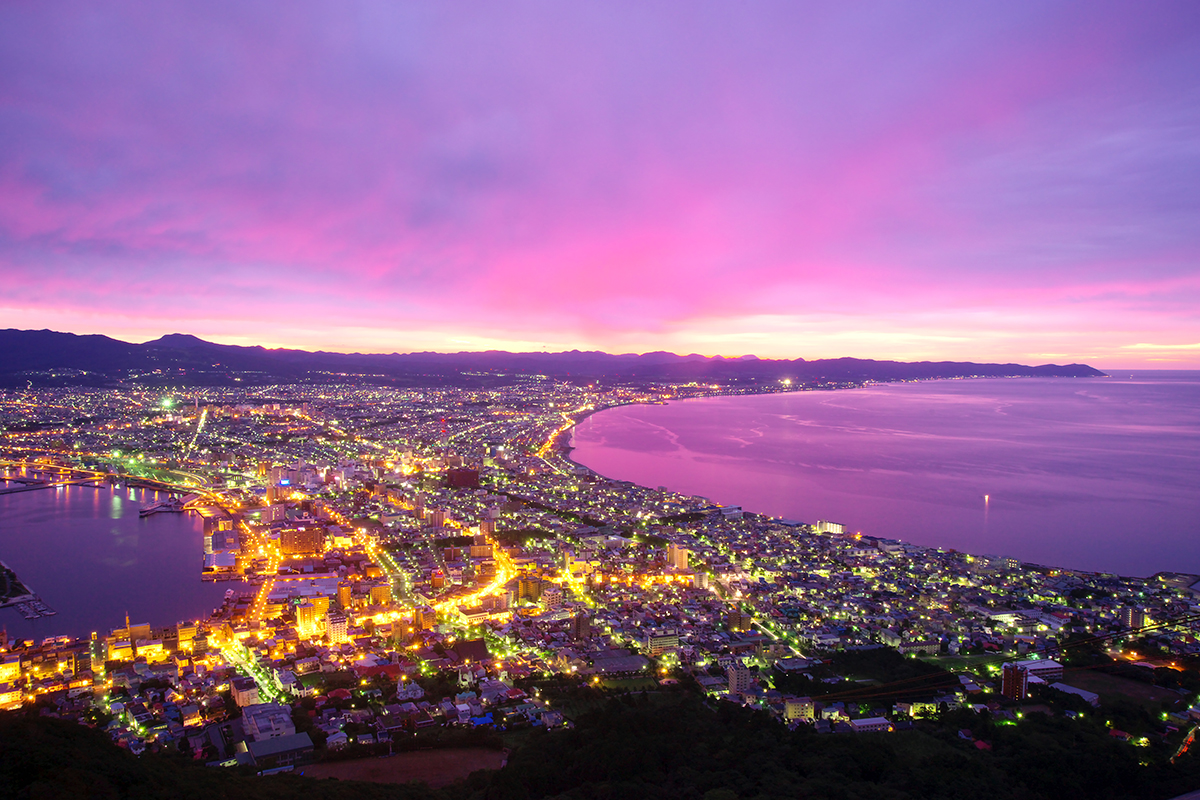
So, what makes the night view so unique and intriguing? If you look at the night view from the observatory at the top of Mount Hakodate at the height of 334 meters, it is said that the location has the perfect angle of 10 degrees to view cityscapes. As seen from Mount Hakodate, the city is lined by the sea on both sides and the curve of both Hakodate bay side and Tsugaru strait side is lined with sparkling city lights. The bright lights and the dark sea create an interesting contrast in the landscape. Furthermore, the lights of the city are mostly warm and cozy lights of people’s homes, not just cold neon lights. The warm orange color of the lights gives the night view a romantic tint.
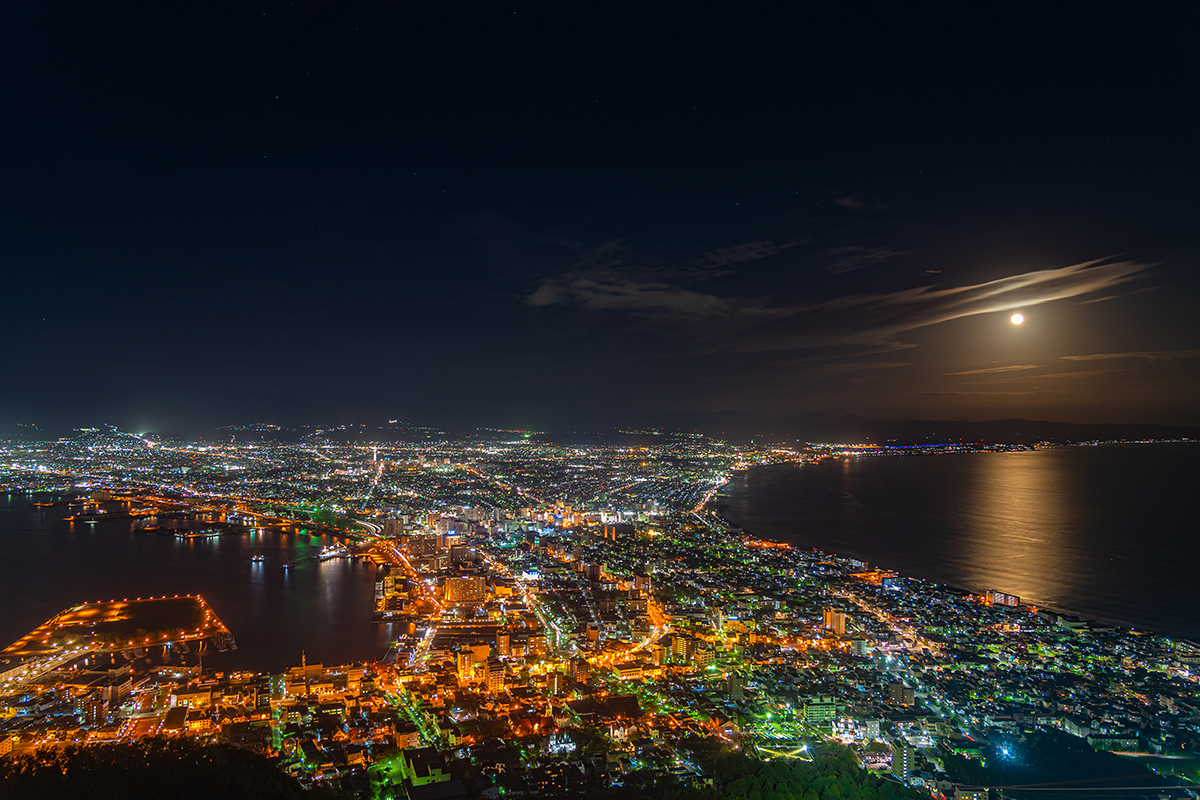
The best spot to enjoy Hakodate night view: Mount Hakodate
The most famous one of the Hakodate night views is without a doubt the night view from Mount Hakodate, so be sure not to miss it when traveling in Hakodate. This scenic view can be seen from an observation deck on Mount Hakodate at an elevation of 334 meters (about 1096 feet). There is a cable car connection to the observation deck from the foot of the mountain and it only takes about 3 minutes to go up. During the busiest time, the cable car runs every 5 minutes, and during not-so-busy times every 10 minutes, so you don’t need to wait for a long time to get to the observation deck. Other options are a bus (either public transportation or a tour bus) and hiking. Private cars are only allowed to enter the area outside the busiest season.
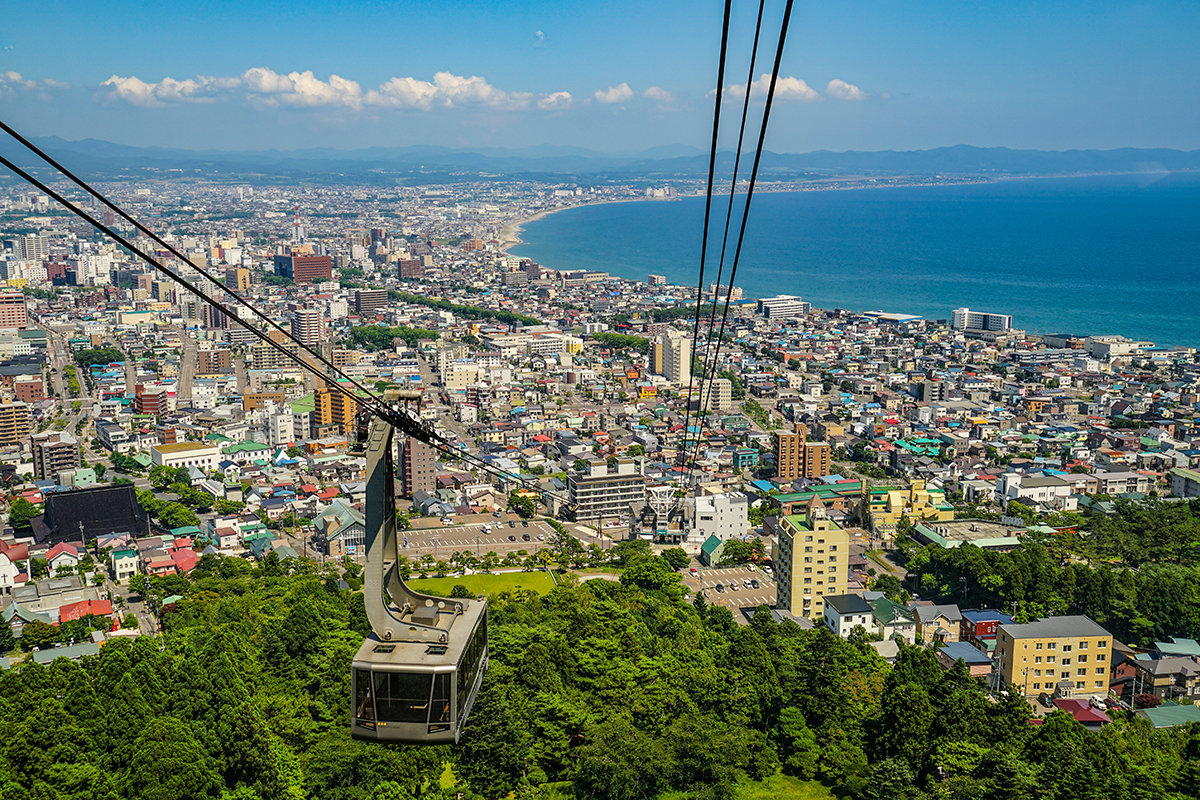
There are two observation decks on the mountain: an indoor observation deck with a restaurant and an outdoor observation deck. The view is of course the most beautiful seen from outside without reflecting windows between you and the view. During the winter months (October–April) it can be very cold outside, so most of the viewers are staying in the indoor facilities. If you prepare to stay outside and wear clothes warm enough, you can enjoy the night view outside without the crowds.
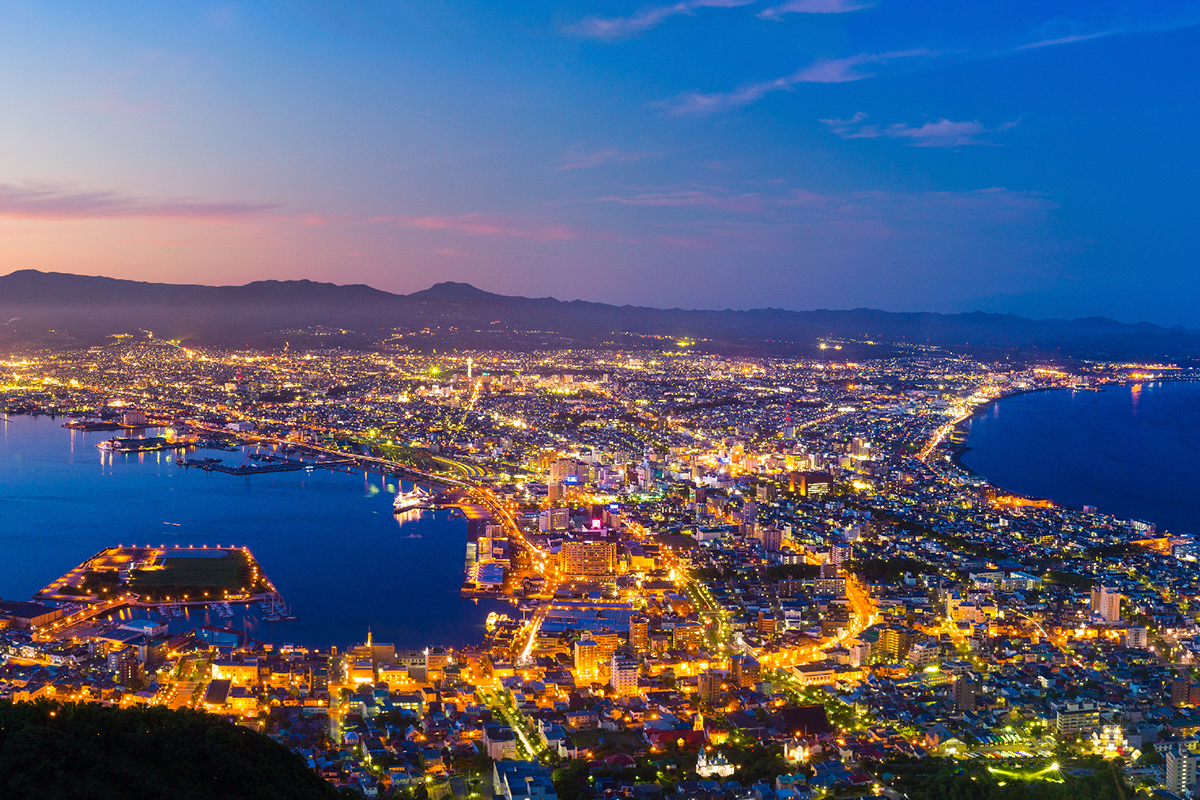
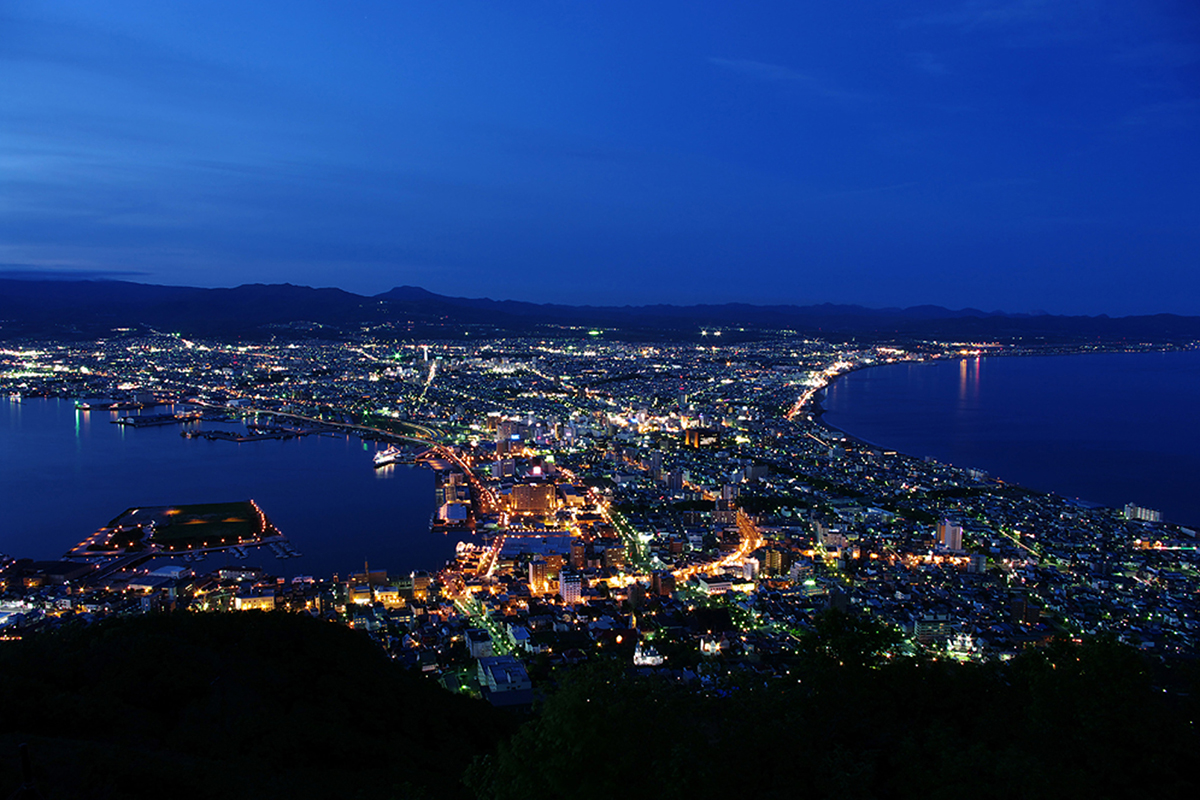
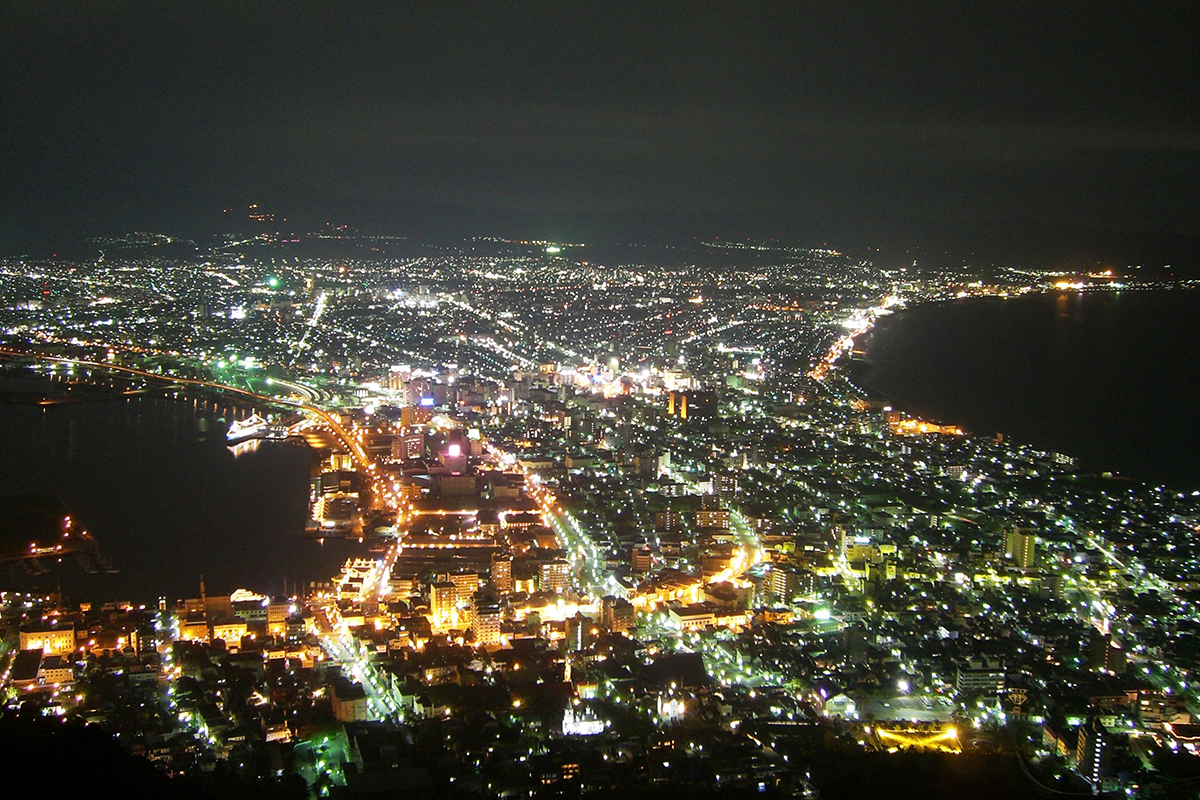
It is recommended to be ready there on the observation deck about 30 minutes before sunset so that you can admire the whole process of day turning into night. The beauty of the view changes depending on the time of the year and of course the view is different during the day, sunset, dusk, night, and dawn. The winter view is said to be the most beautiful with the pure white snow in contrast with the black sea on both sides and glittering city lights.
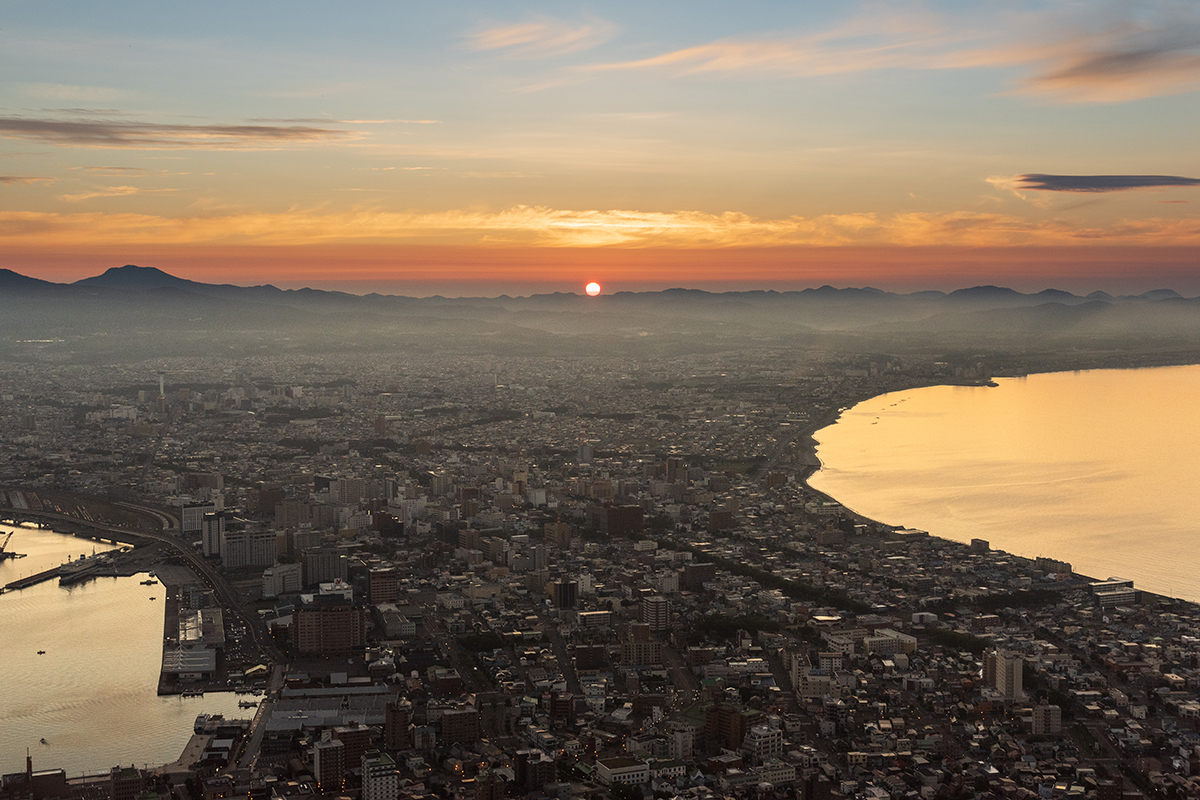
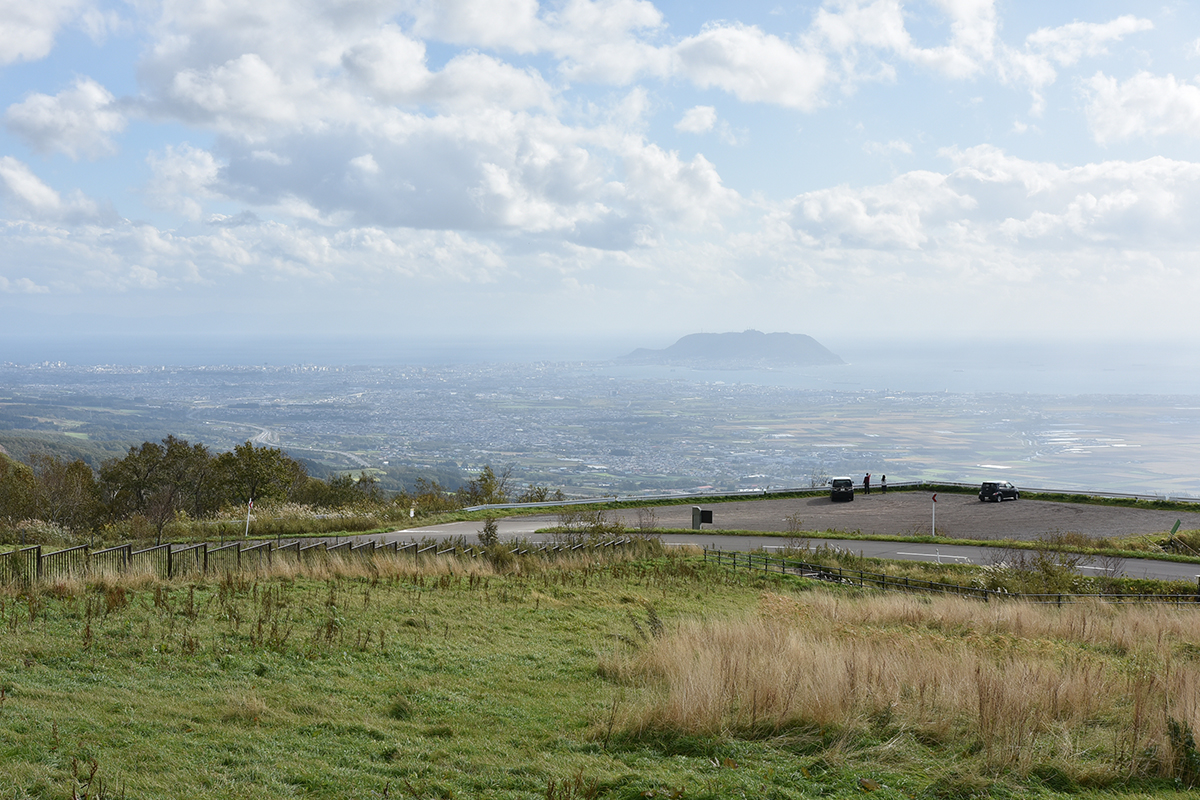
Hakodate back night views
The view from Mount Hakodate over Hakodate city is the best-known night view of Hakodate, but there are others, too. The so-called back night views are views from the other side of the city towards Mount Hakodate and the sea. The back night view can be enjoyed on the observation deck of Shirotai Pasture (城岱牧場/Shirotai bokujo) (an outbound link), which is sometimes also called Shirotai Ranch or Shirotai Farm. The pasture is located in Nanae town next to Hakodate city and it takes about 30 minutes by car to get there. The Shirotai pasture observation deck is not open during the winter months, from mid-October until mid-May.
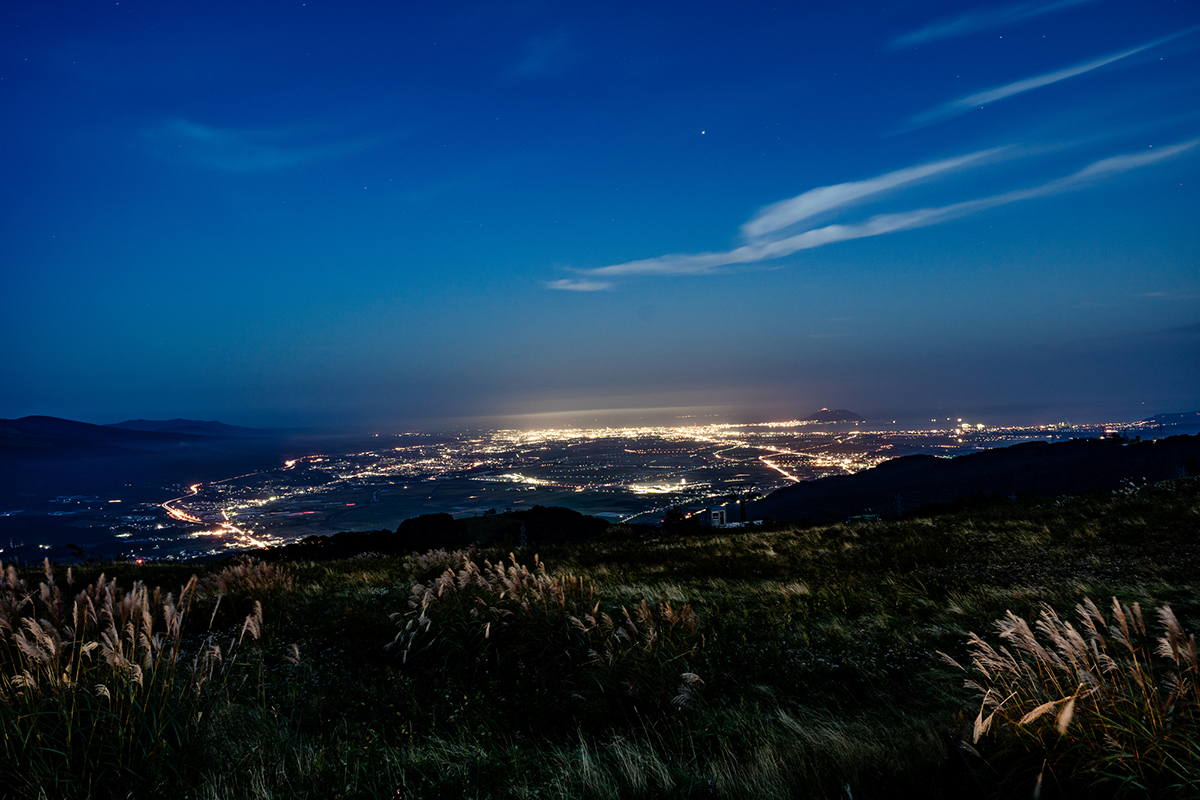
Another good spot for the back night view is another neighbor of Hakodate, Hokuto city, and its Kijihiki Highland Panoramic Lookout (きじひき高原パノラマ展望台/Kijihiki Kogen panorama tenbodai). This observation deck rises 560 m (1837 feet) above sea level and offers an excellent view of the surroundings, including Hakodate city, Mount Hakodate, and Tsugaru strait in the southeast, but also the Onuma quasi-national park with Mount Komagatake and the lakes Onuma and Konuma in the northeast. The Kijihiki Highland Panoramic Lookout is about 30 minutes drive from Hakodate and it can be accessed from late April until early November. There is also a campsite and a museum about the history of the Kijihiki highland, so you might also want to visit them during your trip.
You can read more about Onuma quasi-national park in our earlier blog column Onuma Quasi-national Park: Enjoying Autumn Leaves in Hokkaido. A trip to Onuma can be easily added to your Hakodate travel itinerary. So when making your reservation, just let us know if you also want to visit Onuma quasi-national park during your Hakodate trip.
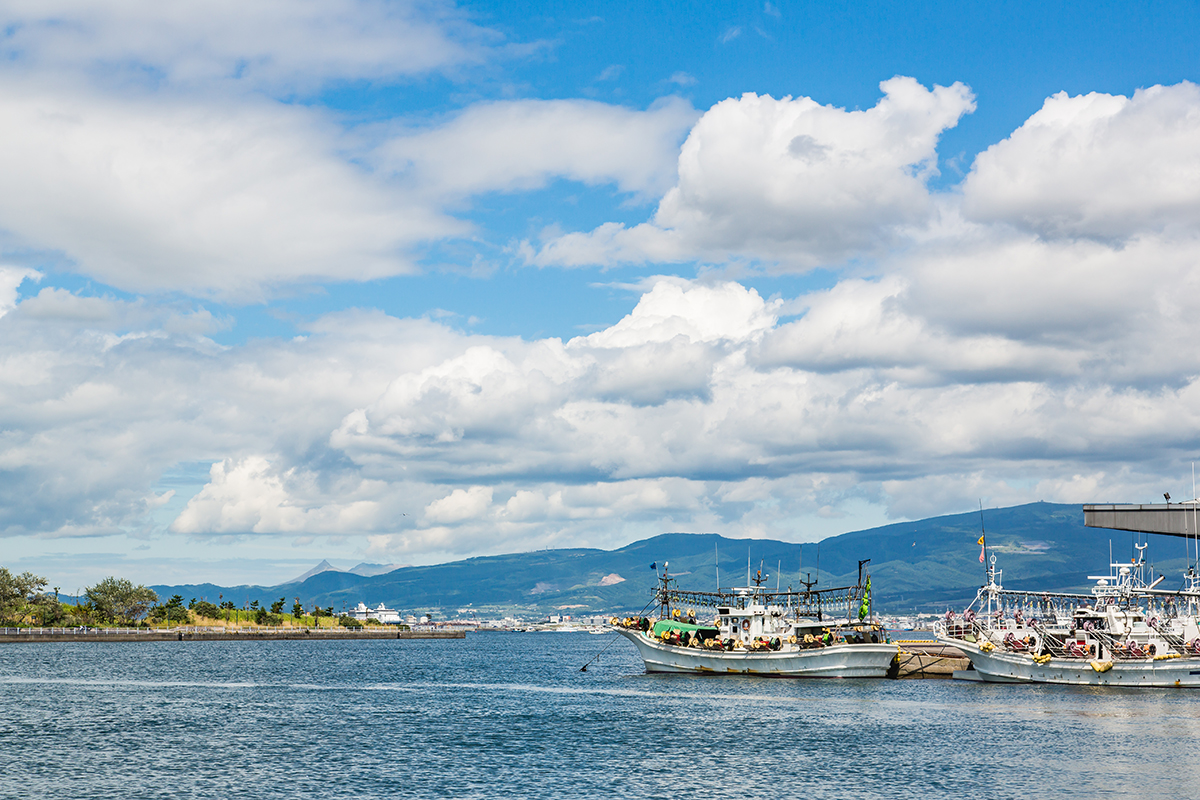
Hakodate night views from the sea
Yet another angle to the Hakodate night views is from the sea. Midori no Shima (緑の島/Green Island) is an artificial island built in the Hakodate port in Omachi. The island is pentagon-shaped and has an area of 8 hectares. Most of the island is covered with grass, where the locals enjoy themselves by flying kites, practicing soccer, or having picnics. The island is lined with walking paths, from which the amazing Hakodate night view of Hakodate bay can also be seen.
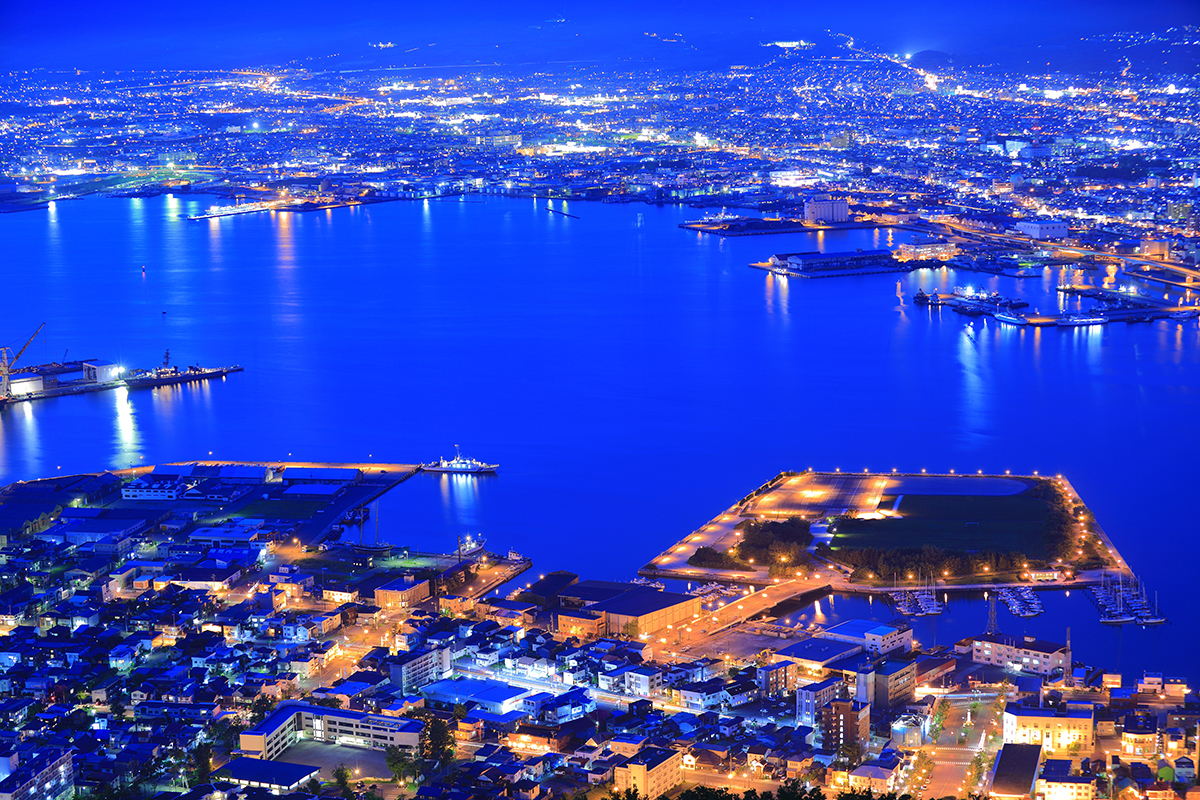
Also, the fleet of Japan Maritime Self-Defense Force docked at the West Wharf is visible from Midori no Shima. The island is connected to the city with a bridge. There is a parking lot on the island, which can be used during the summer, but in the winter, the parking lot might become a snow dumping area depending on the snow situation, so parking space might not be available during the winter. However, you can always walk to the island from the port.
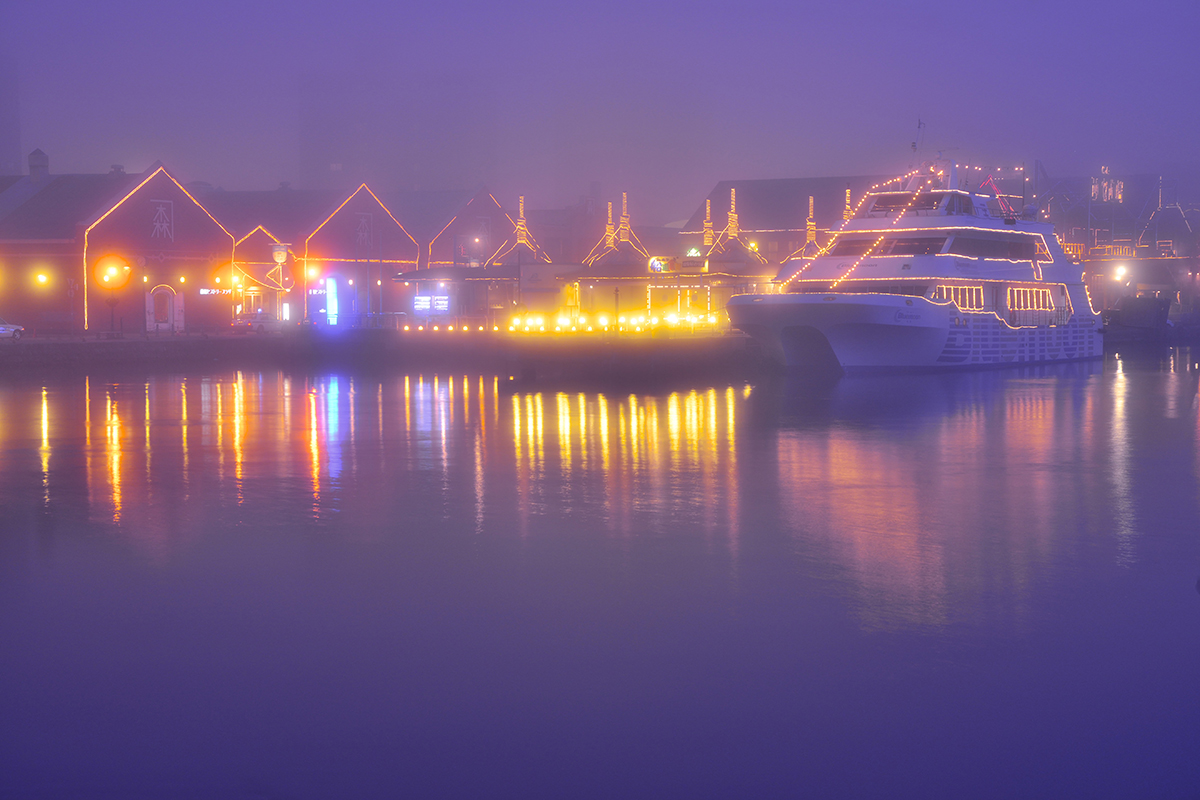
Another beautiful night view to the city from the seaside is from Chuo-futo (中央埠頭) or Central Wharf. During the day, the wharf is occupied by fishers but during the night it offers a romantic view of downtown Hakodate with Mount Hakodate in the background. This is one of the little-known good spots for Hakodate night views, and if you want to avoid the crowds, Central Wharf is the place to go.
Night views within Hakodate city

Hakodate itself is a very beautiful city with a mix of buildings of different eras and different cultures. In addition to the traditional Japanese buildings, you can also see many western-style buildings in Hakodate. Hakodate used to be one of the few ports the western traders had access to in Japan and it can also be seen in the cityscape. The city night views are especially beautiful during the winter when the buildings and streets are decorated with seasonal lights.
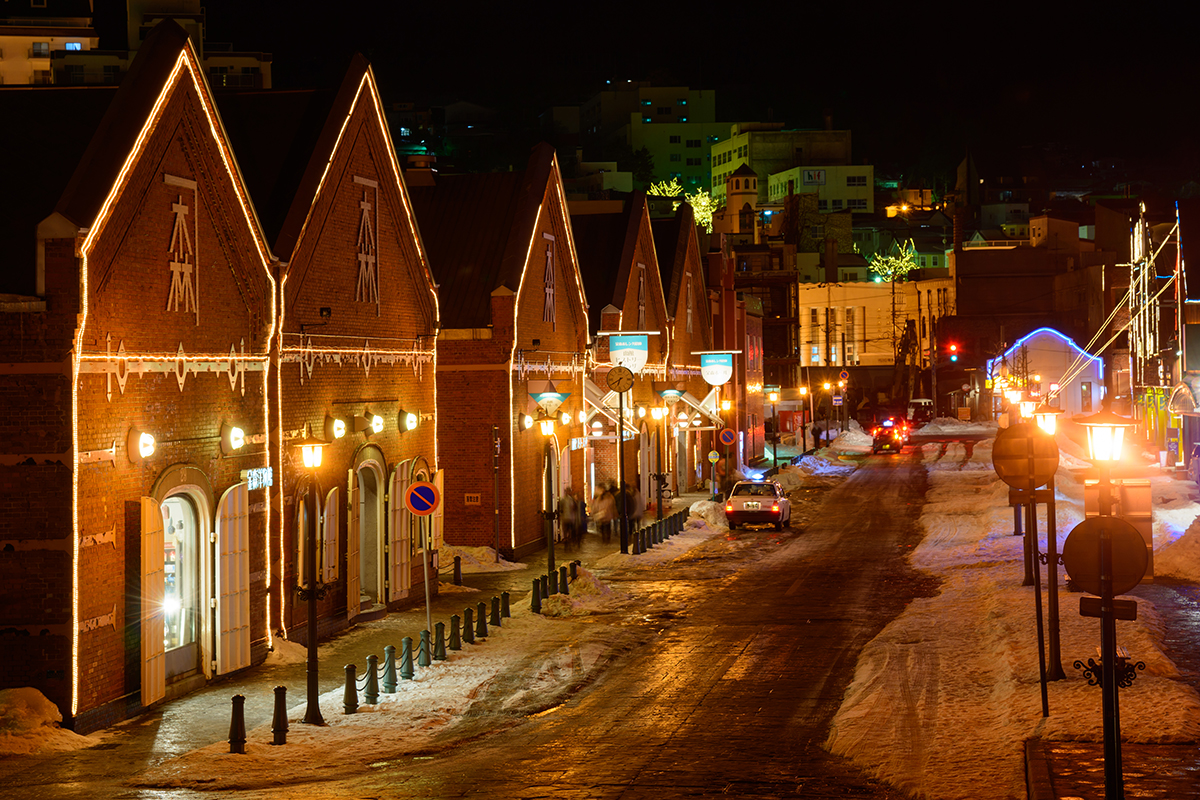
One of the must-see night views in Hakodate is the Kanemori Red Brick Warehouse (金森赤レンガ倉庫/Kanemori akarenga soko) (an outbound link), a shopping complex built in the old warehouses of the Bay Area. The original warehouses built in 1909 have been renovated into four different facilities. The facilities host several restaurants, shops, and galleries for the visitors to eat, buy, see, learn, and enjoy. On top of that, the area has a romantic old-time feeling about it at night, so just strolling around the area is a great experience in itself.
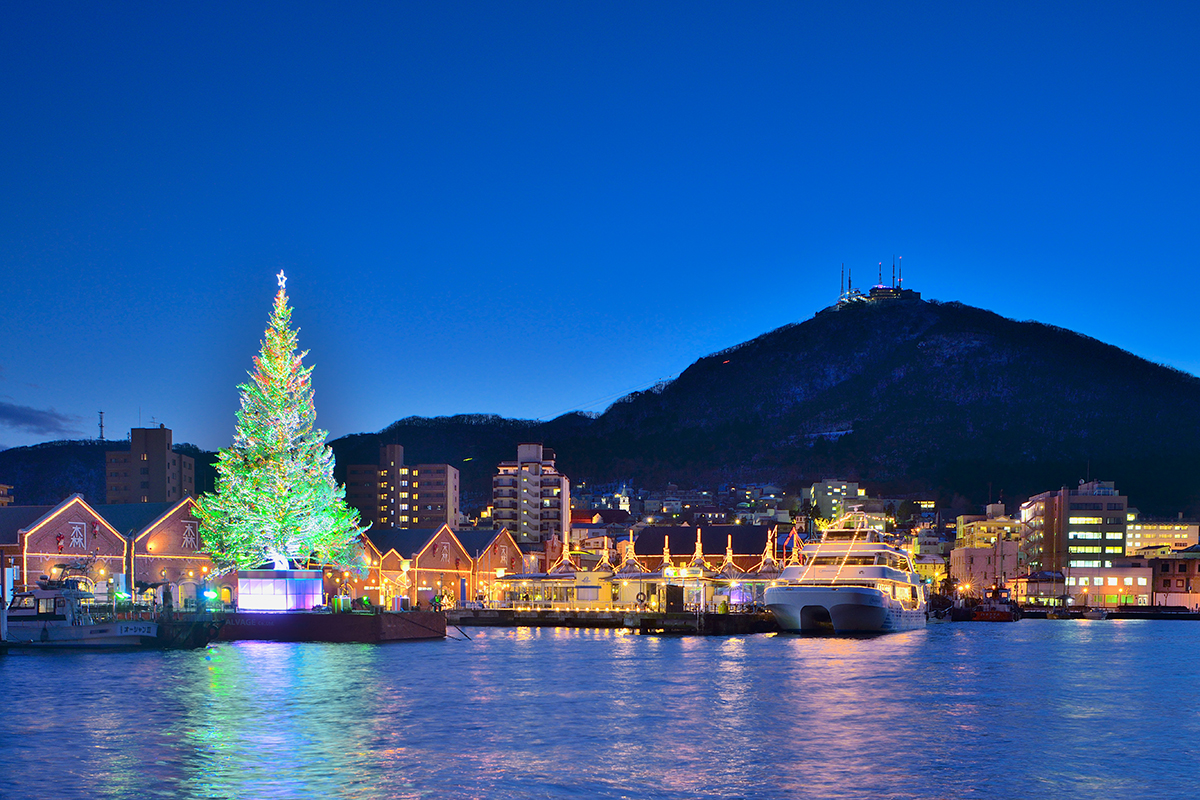
If you are visiting Hakodate in the winter, and especially in December, the Bay Area and Kanemori Red Brick Warehouse are clad in Christmas decorations during the Hakodate Christmas Fantasy event (はこだてクリスマスファンタジー/Hakodate kurisumasu fantajii) (an outbound link). The warehouses are illuminated with cheerful lights and there is also a gigantic Christmas tree floating on the sea. The tree is decorated with 50,000 lights which light up every evening ceremonially with a small-scale fireworks display. The temperature drops around 0°C (32°F) in December but you can warm yourself up with a bowl of delicious soup that the stalls along the main street are selling. The event is open from the beginning of December until Christmas Day.
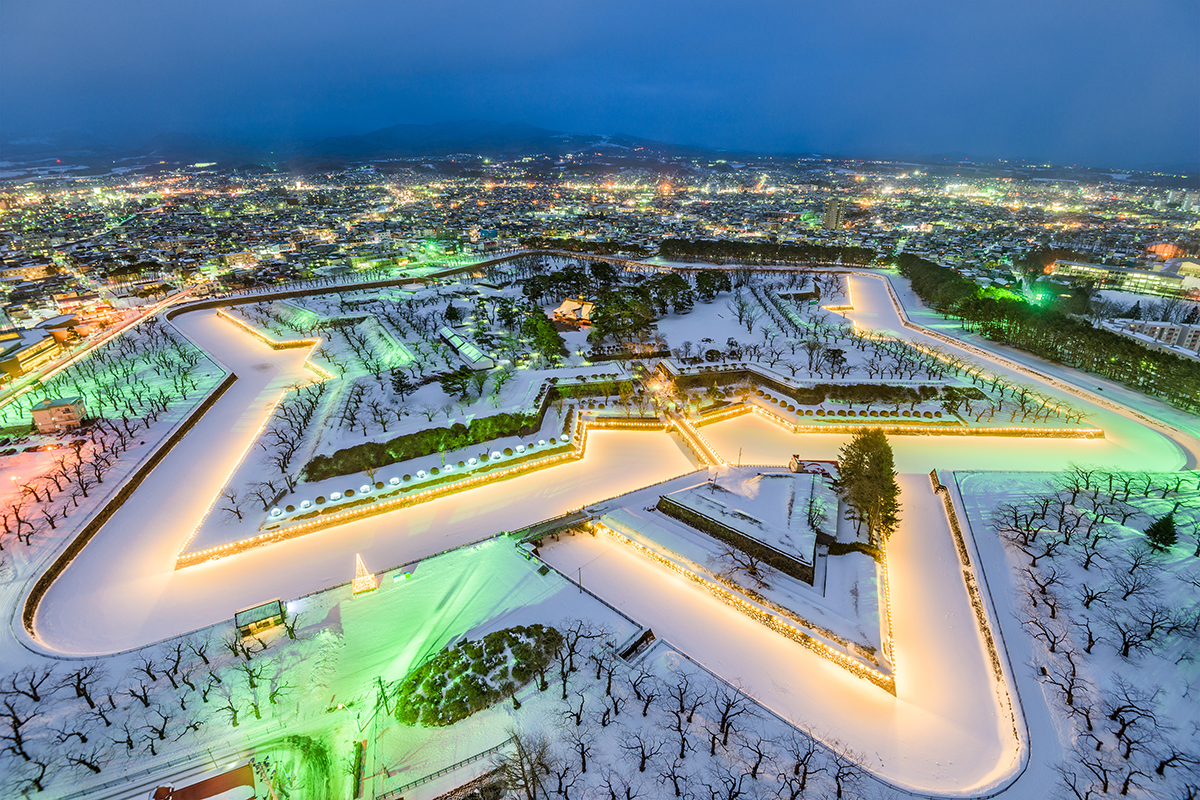
Another amazing night view within the city is from Goryokaku tower (五稜郭タワー) (an outbound link) of Goryokaku fort (五稜郭). Goryokaku means five-point fort and the fort is indeed shaped like a five-point star. The construction of the fort was completed in 1866, and it’s one of the must-see historical sites in Hakodate. Goryokaku tower is a 107-meter-tall tower with an observation deck built just outside the Goryokaku fort and the fort park. The tower offers an amazing view over the star-shaped fort below and the whole city of Hakodate.
Lit-up Hakodate city in the winter
The view from the Goryokaku tower is beautiful during any season and time of day, but it’s especially enchanting in winter. In the Star Illumination of Goryokaku (五稜星の夢/Goryohoshi no yume) (an outbound link) event the moat of the fort is decorated with dreamy lights, which makes the star shape really stand out in the darkness of the night. The illumination together with the pure white snow covering the moat makes the view especially elegant. In Hakodate, there are some snowy days starting from November, but if you absolutely want to see the city clad in snow, you should make your trip in January or February. The illumination can be enjoyed from both the Goryokaku tower and down at the perimeter of the moat. Star Illumination of Goryokaku is open from early December and lasts until the end of February. The lights are on every night from 5 pm to 8 pm.
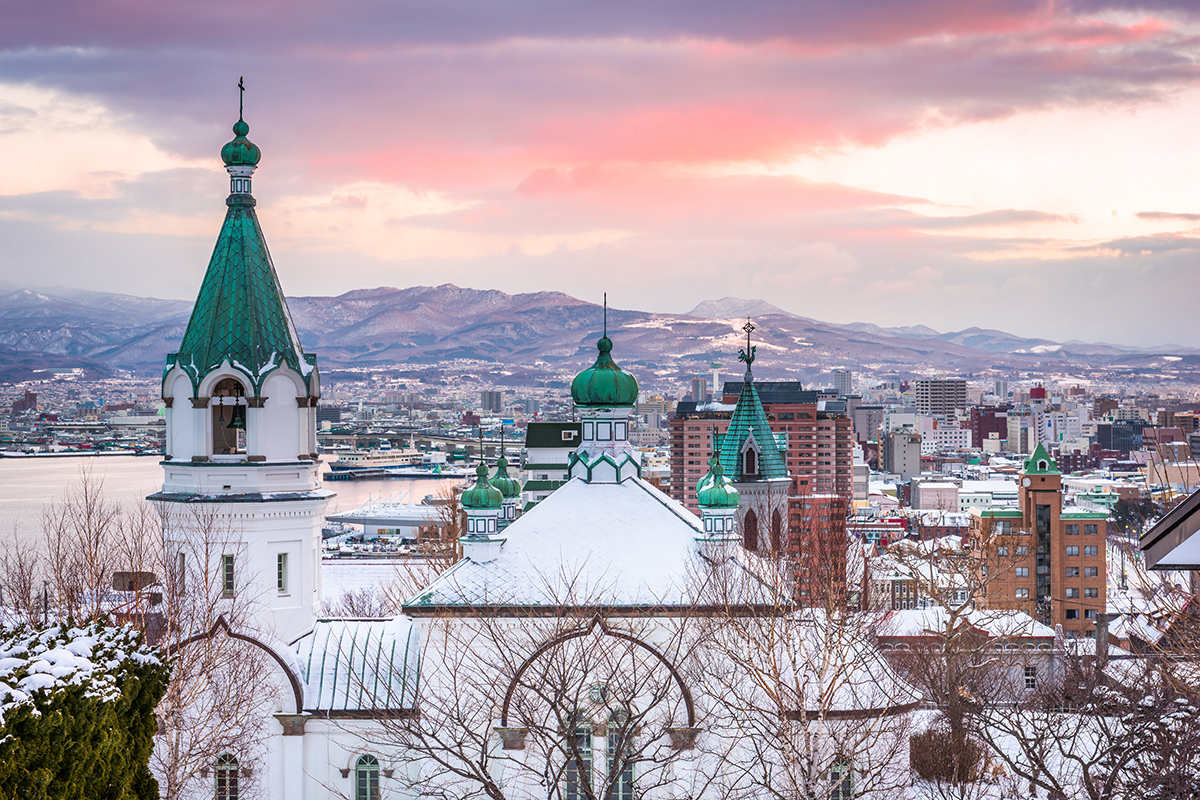
In another winter illumination event—Hakodate Illumination (はこだてイルミネーション) (an outbound link)—the slopes in the Motomachi district are illuminated with lights consisting of about 50,000 tiny lamps. The Motomachi district lies on the foot of Mount Hakodate, between the mountain and the port, and it hosts several beautiful historical buildings, such as the Old Public Hall of Hakodate Ward and the Russian Orthodox Church. In Motomachi, there are 19 slopes (坂/saka) or sloping streets leading from the foot of Mount Hakodate to the Port Area.
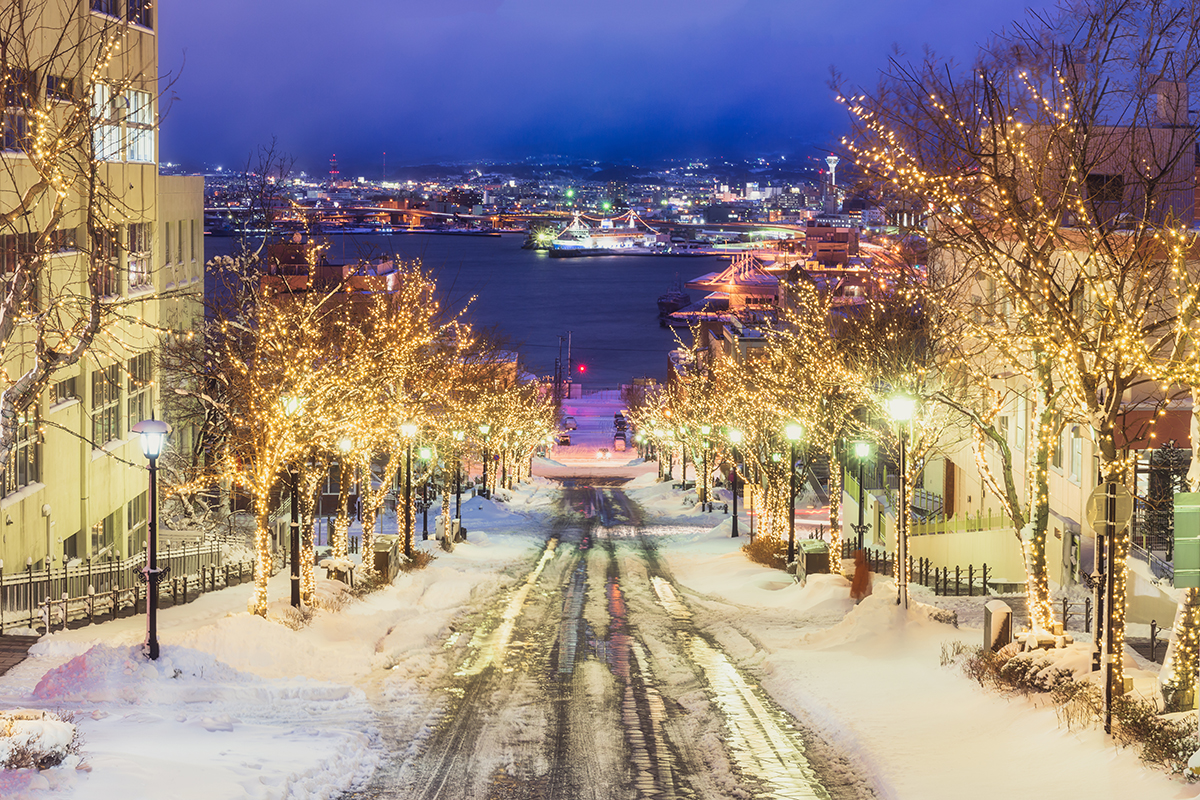
The slopes are lined by beautiful old buildings and give an amazing view of the port and Hakodate bay. One of the most famous of these slope streets is Hachimanzaka (八幡坂), which is lined with beautiful trees and offers an iconic view of the port. In Hakodate Illumination, the buildings and trees on the slopes are illuminated to make the views even more charming. The illuminations can be viewed from 5 pm to 10 pm after the start of the event at the beginning of December until the end of February.
Plan your perfect Hakodate trip
In addition, to enjoy Hakodate by seeing, there are of course other ways, too, to have a good time in Hakodate. Hakodate is an excellent destination for people who love eating good food or are interested in learning new things. We introduce here some dishes to eat and places to visit during your Hakodate trip to make it a perfect culinary and learning experience.
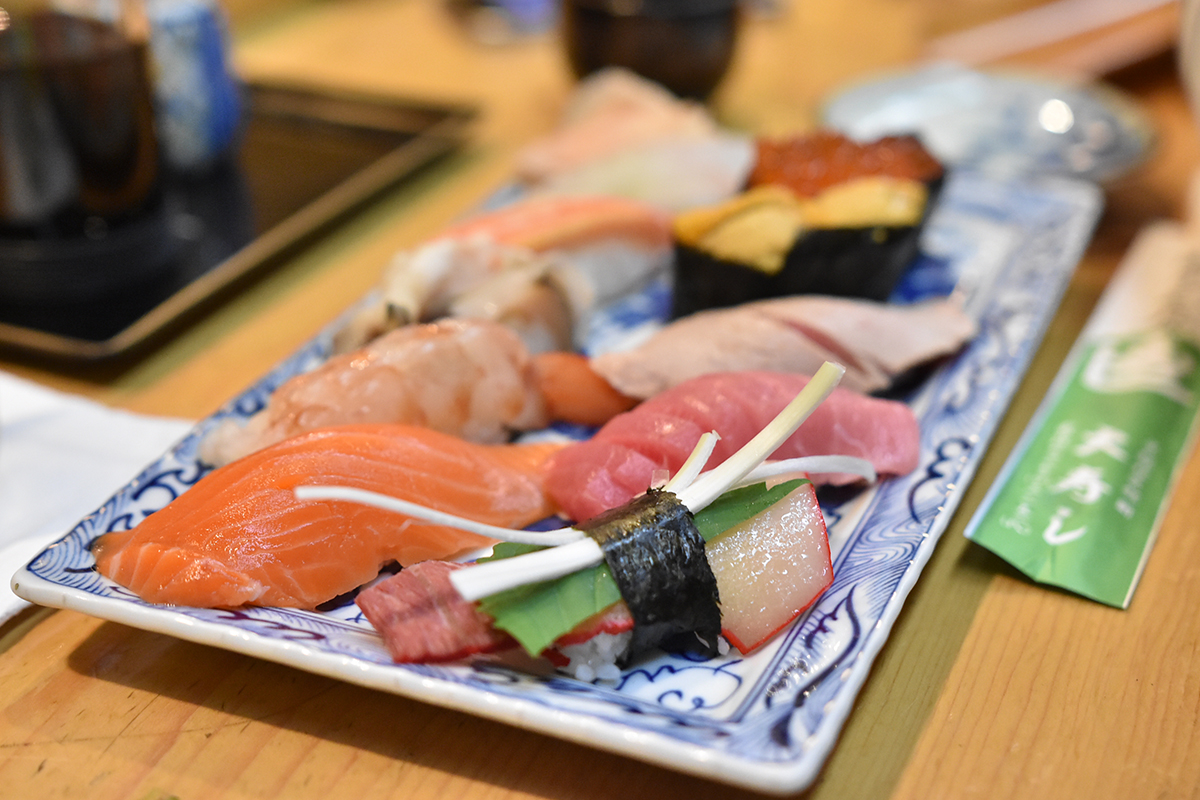
Indulge yourself in local Hakodate food
Hakodate is a port city, so many of the local delicacies are seafood. Here you can feast on world-class squid, shrimp, tuna, scallop, salmon, sea urchin, horsehair crab, hokke (Okhotsk Atka mackerel), oyster, and many others. Especially great ways to savor these are sushi, sashimi (raw seafood), or kaisendon (a rice bowl topped with sashimi).

A good place to eat your sushi, sashimi, or kaisendon is the Hakodate morning market (函館朝市/Hakodate Asaichi) (an outbound link) that opens early in the morning to cater to locals’ culinary needs. In addition to seafood, you can find fresh fruit and vegetables, household goods, and much more in the 250 shops at the market. Hakodate morning market is conveniently located just next to Hakodate station, so it’s easy to access, too.
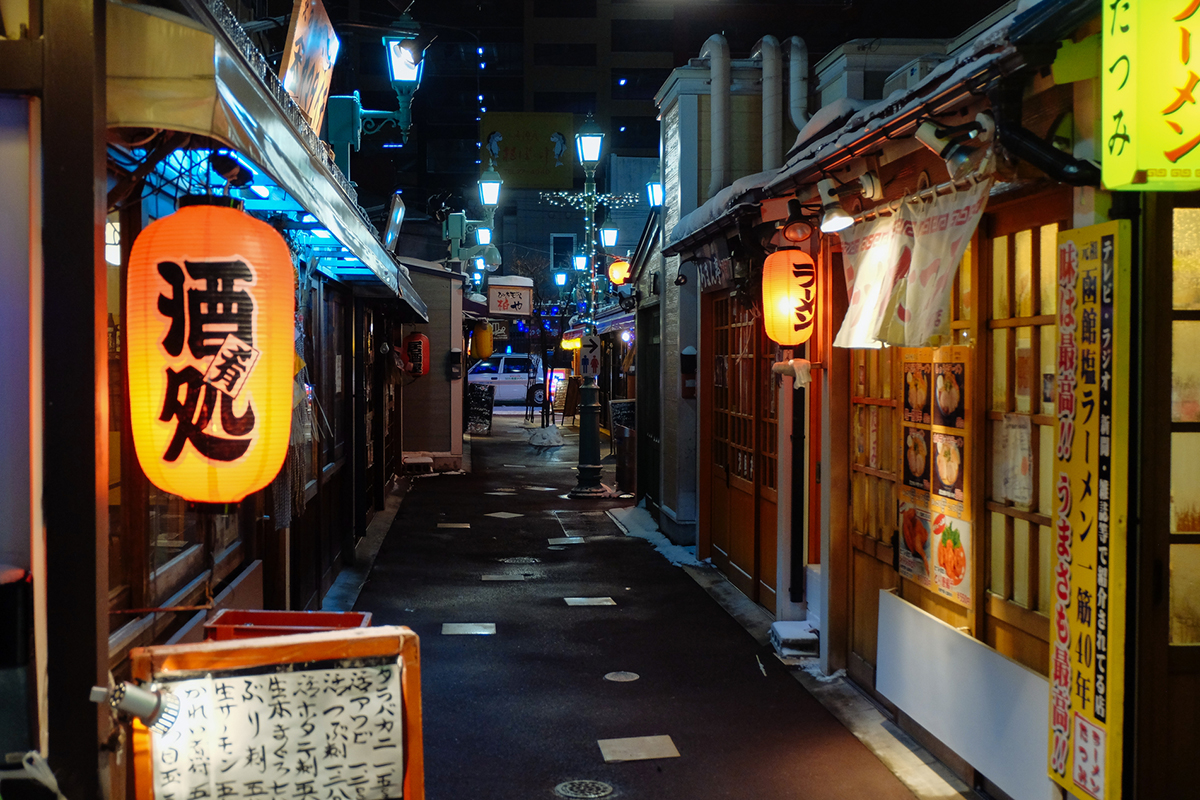
Most of the shops in the morning market are closed by noon, so if you can’t make it to the market by then, another nice place to enjoy your sushi is Daimon Yokocho (大門横丁) (an outbound link), also close to Hakodate station. Daimon Yokocho is a food stall “village” (that is, a concentration of 26 food stalls of various kinds) and it does not only offer a variety of food from sushi to ramen and from tempura to jingisukan (grilled mouton and vegetables) but also Italian and French food. Some of the food stalls are also open during the daytime, but Daimon Yokocho is at its best during the night.
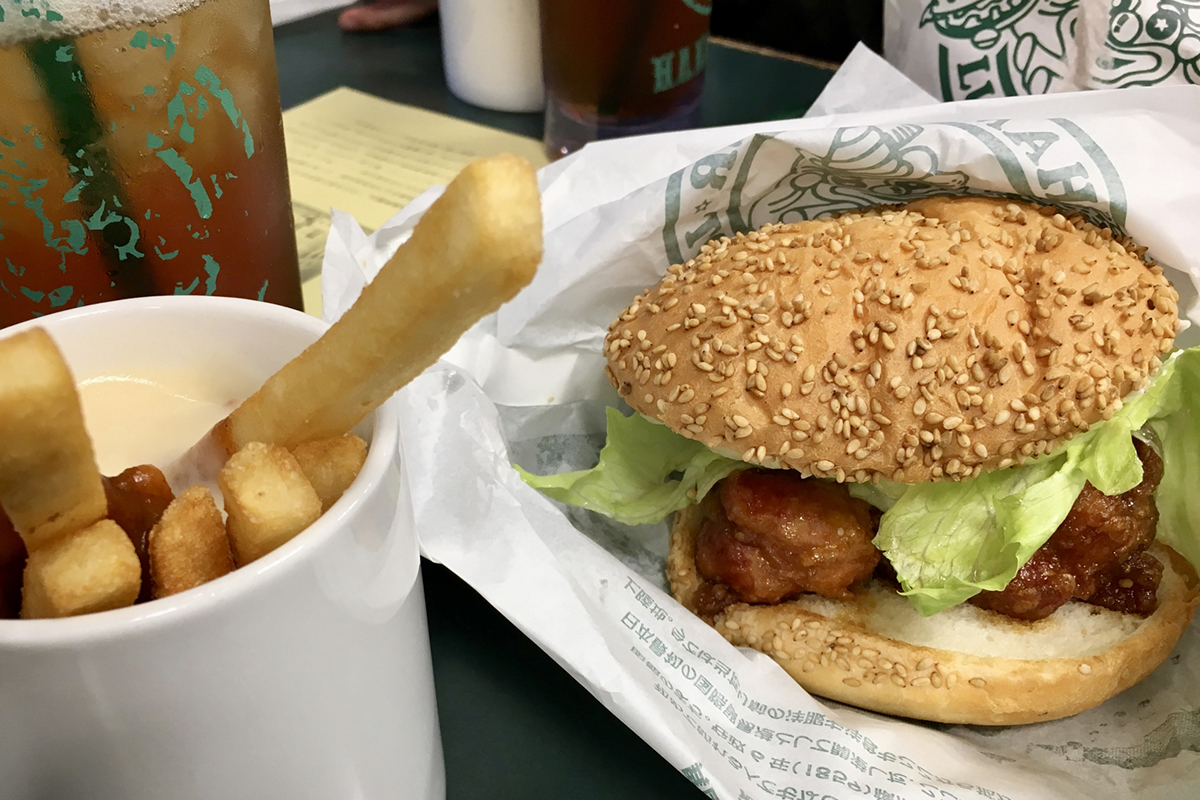
Hakodate has a long history as an international port and the influences from other cultures can be seen in both the architecture of the city as well as in the food culture. A fun fusion of western and Japanese food culture is offered in a local hamburger chain called Lucky Pierrot https://luckypierrot.jp/en/ (ラッキーピエロ) (an outbound link). Lucky Pierrot has several shops around Hakodate city with some special dishes served in each of the shops. Some of the hamburgers on the menu are something you can find in any hamburger chain anywhere in the world, but many of them have a special Japanese flavor in them. In Lucky Pierrot you can find such burgers as deep-fried chicken burger, sweet chili prawn burger, and pork cutlet burger. Do try some when you are traveling in Hakodate!
Learn about the intriguing history of Hakodate
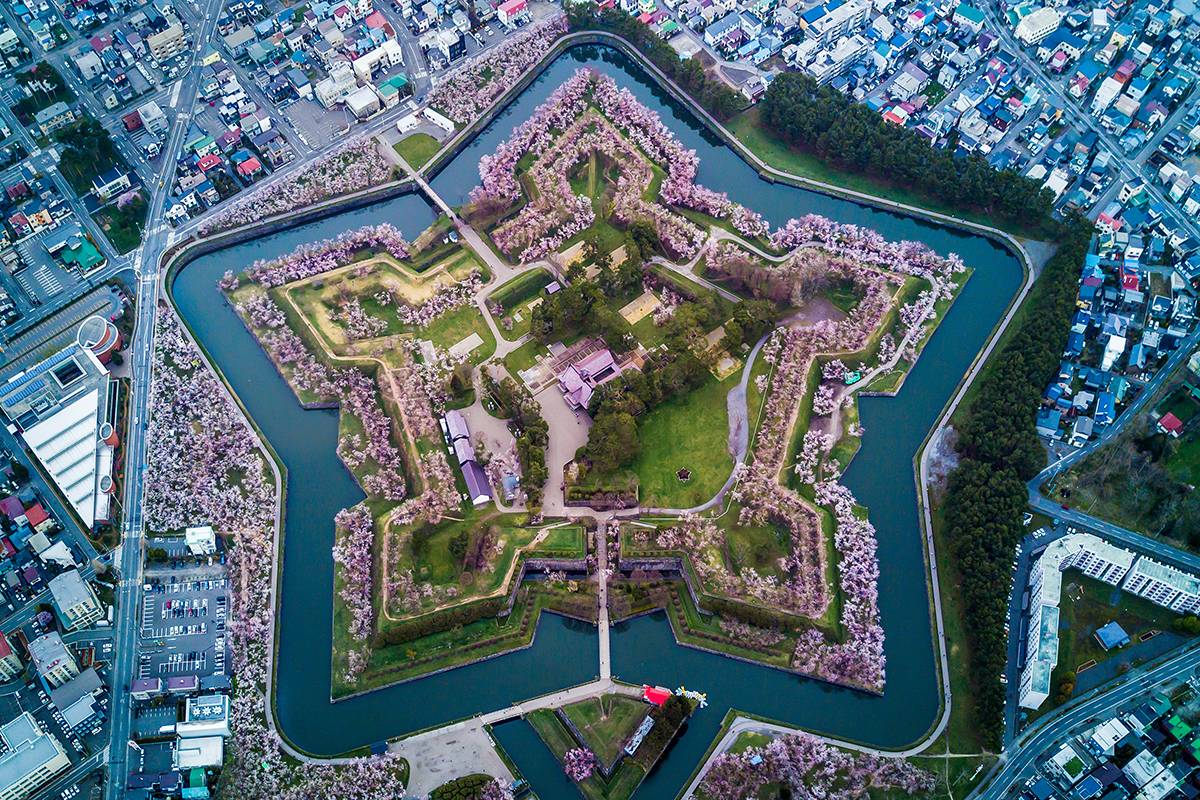
Hakodate has been playing a significant role in the modern history of Japan. The city was the final battle scene in the civil war called the Boshin war in 1869, in which the reformist new government forces conquered the last samurai, who supported the old regime. The war marked the end of the Japanese seclusion policy of a closed country and was a starting point for Japan to become a modern great power. Especially important sites during the Boshin war were the Goryokaku fort and the fortress and observation post built on Mount Hakodate.
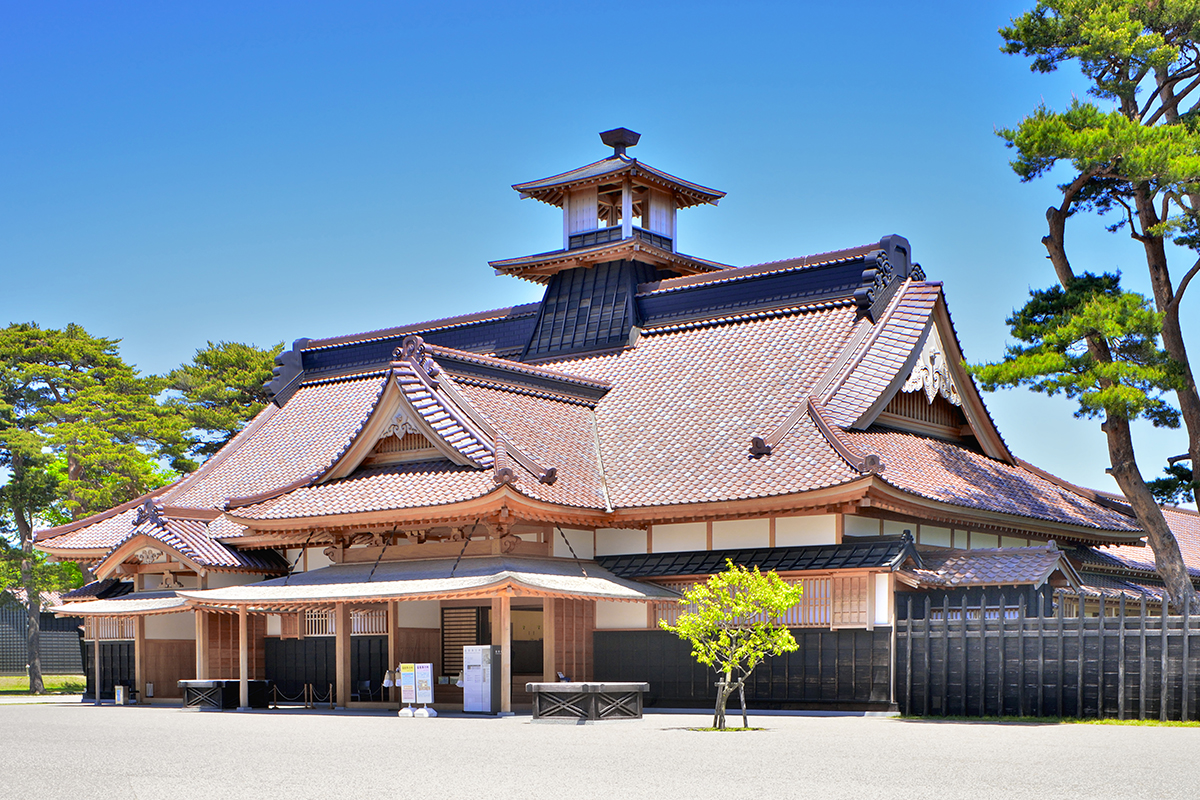
The star-shaped Goryokaku completed in 1866 is the first western-style fort in Japan designed by Ayasaburo Takeda with some advice from a French navy official. During the Boshin war, it was used as the headquarters of the samurai forces. Now the fort has been turned into a park, so anyone can go and feel the historical atmosphere. In the middle of the park stands Hakodate Magistrate’s Office (箱館奉行所/Hakodate bugyosho) (an outbound link), a beautiful Japanese-style wooden building that is open for visitors to admire the traditional craft used to build the office and to learn about Hakodate history and the Boshin war.
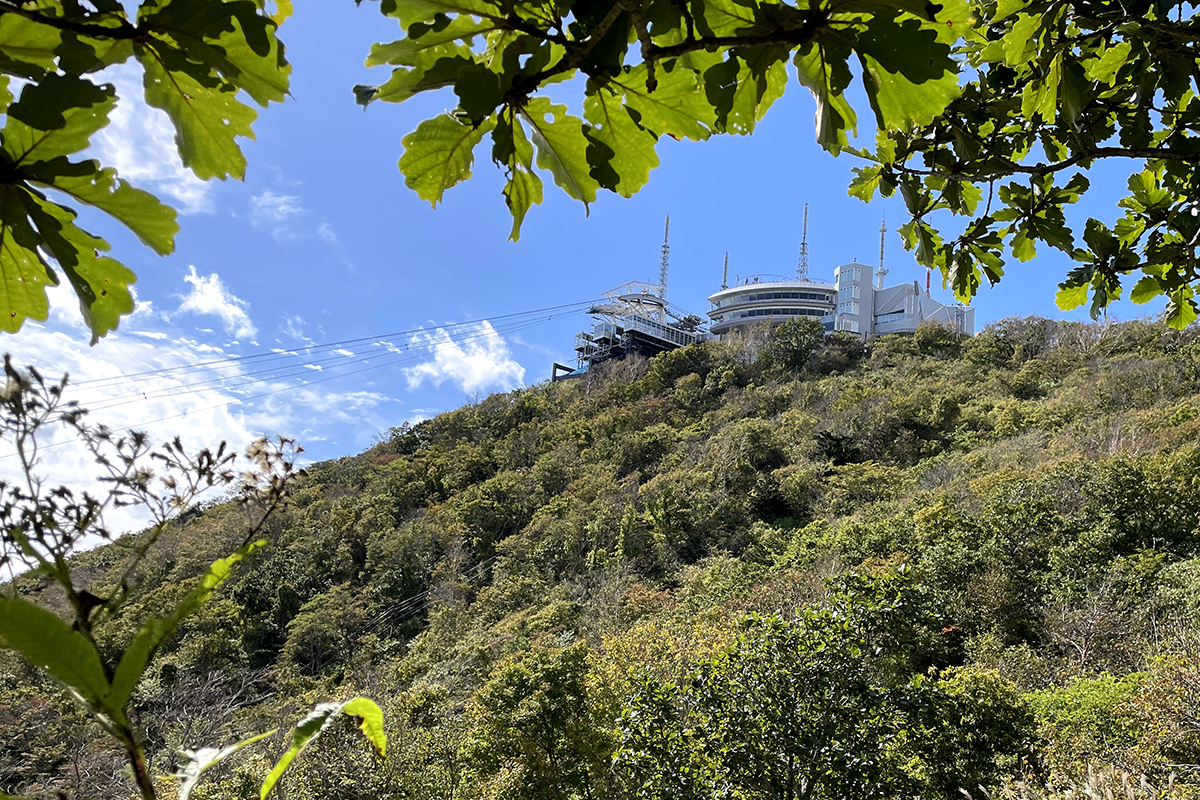
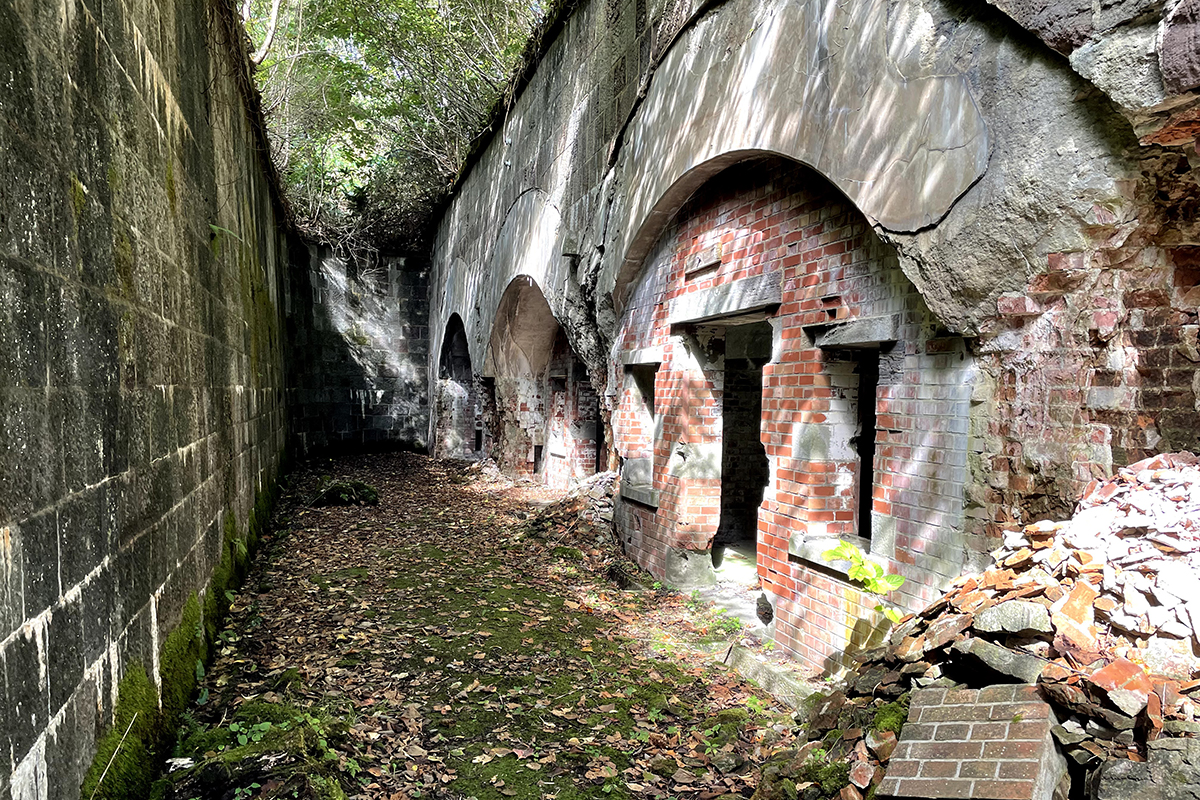
Hakodate remained as an important military site after the civil war ended. An especially important site was Mount Hakodate (or rather the mountain range of 13 mountains called Mount Hakodate), which served as an army fortress and a view post between 1898 and 1946. During that time civilians couldn’t enter the mountain, but now anyone is free to roam the area and take a look at the fortress ruins. The old batteries of the fortress are not marked in any way, so the best way to get to know this historical place is to go together with a local guide, who can not only show you the way but also tell you about the history of the place. Just contact us through our inquiry form, and we’ll arrange a guided tour for you.
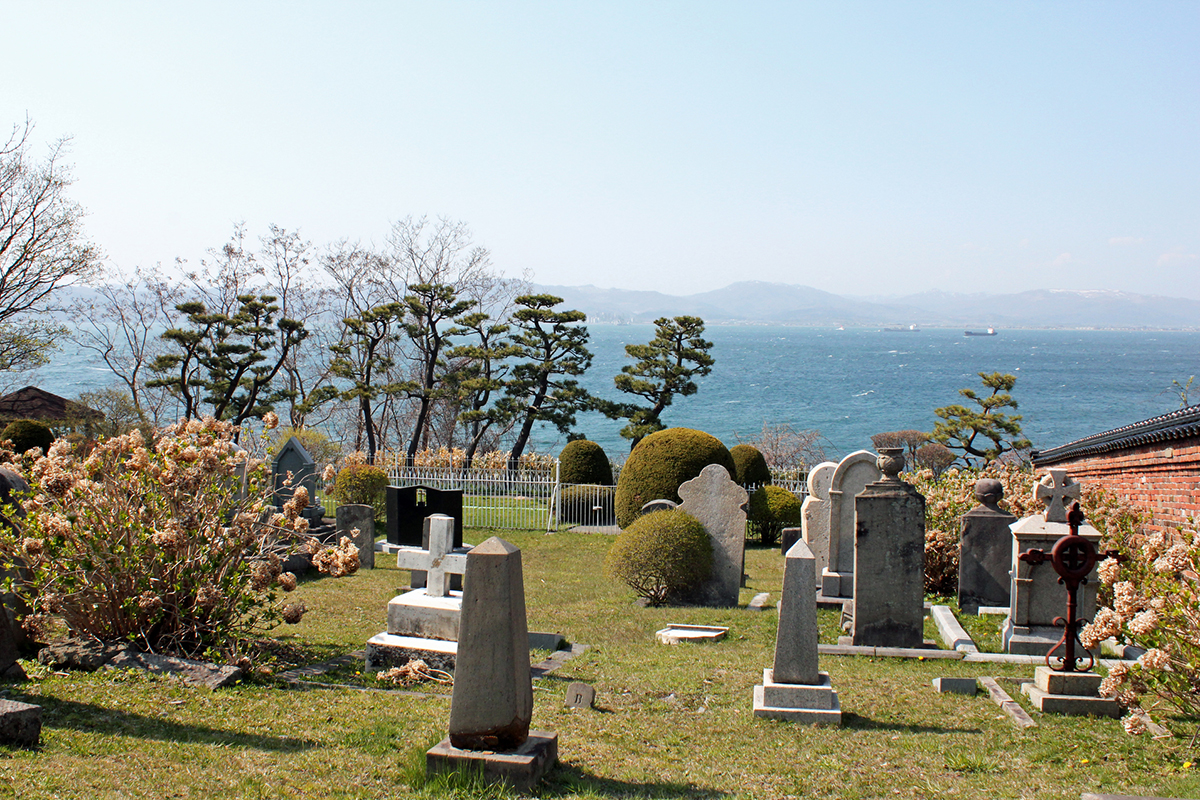
Yet another place to learn about Hakodate’s history is the Hakodate Foreign Cemetery (外国人墓地/Gaikokujin bochi). As Hakodate was one of the first ports to be opened for foreign traders, there was a mix of foreign nationalities and religions in the city, too. Sometimes it happened that the visitors didn’t make it back home, so there was a need to bury the dead somewhere. The first two deceased buried in the cemetery were American navy soldiers in 1854 followed by many other Americans, Europeans, Russians, and Chinese. The graves are arranged by the nationality and the religion of the deceased, so you can see many different styles of graves here. The cemetery offers a wonderful panorama over Hakodate Bay and it is a great spot to view the sunset, too.
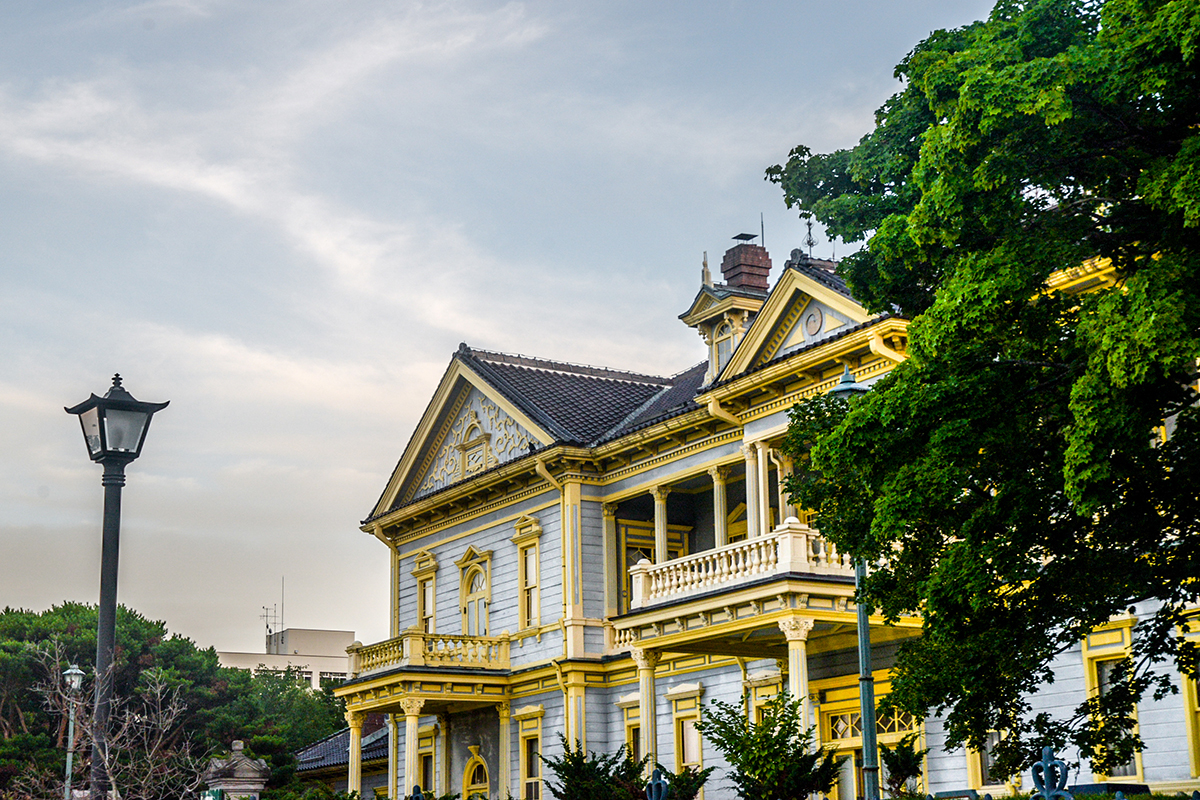
What comes to the old foreign-style buildings in Hakodate city, the Old Hakodate District Public Hall (旧函館区公会堂/Kyuu Hakodateku Kokaido) (an outbound link, in Japanese only) is one of the most famous among them. The construction of the hall was completed in 1910. When visiting Hakodate, the imperial family used to stay in this beautiful wooden building. The purpose of the hall has always been to be a place to gather for the Hakodate citizens but during the war, it was used as a hospital, army headquarters, and courthouse. Visit the hall to learn more about the interesting history of Hakodate!
As old buildings do, the Hakodate District Public Hall, too, needs some touch-ups once in a while. The latest renovation of the hall was done just a couple of years ago and the building was reopened for the public in spring 2021. Interestingly, the color of the building has been changed with one of the renovations: The hall has been pale blue and yellow only since 1980. Before that, it was light pink and white.
You can read more about the history of southern Hokkaido in our earlier blog columns History of Hokkaido: The war of the last samurai in Hakodate, History of Hokkaido: Kitamaebune cargo vessels in Matsumae and Esashi, and Yakumo: The town of samurai and rice.
If you want to get to know Hakodate by touring the magnificent night views of the city, just contact us. We can make together the perfect travel plan for your Hokkaido trip. You can find our inquiry form at this link. https://hokkaido-treasure.com/contact/
